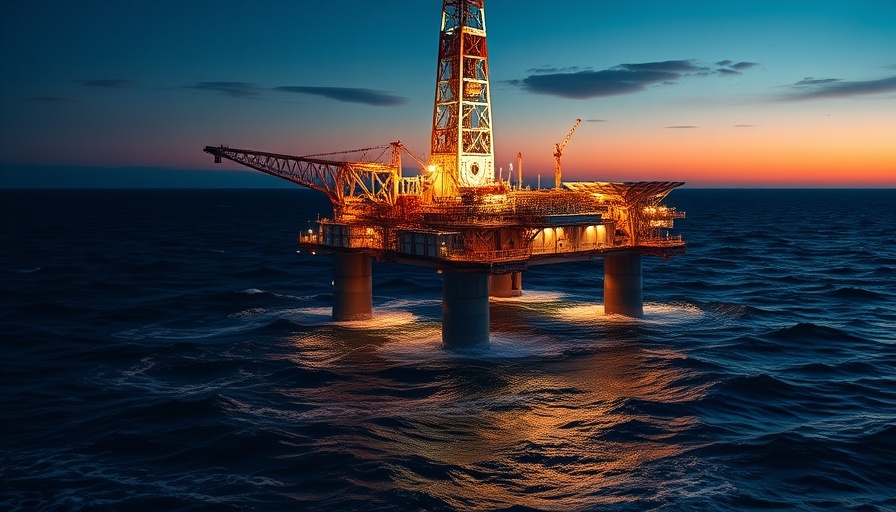
BOEM Opens Doors to Gulf Oil and Gas Lease Sale
The Bureau of Ocean Energy Management (BOEM) has recently put forward a landmark proposal for Lease Sale 262, which will offer approximately 15,000 unleased blocks across the Gulf of America. Spanning roughly 80 million acres, this area covers vast offshore expanses, from just a few miles to over 231 miles away from the coast, with depths varying from 9 feet to more than 11,100 feet.
Importance of Offshore Energy
“Offshore oil and gas play a vital role in our nation’s energy portfolio, with the Gulf of America supplying 14% of domestically produced oil,” BOEM's Principal Deputy Director Matt Giacona remarked. This affirmation underscores the strategic importance of the Gulf in contributing to the overall energy demands of the country, and it also highlights an ongoing commitment from federal agencies to enhance American energy independence.
Reduced Royalty Rates: A Strategic Move
In an unexpected but strategic move, BOEM has proposed a royalty rate of just 16.67% for both shallow and deepwater leases—the lowest deepwater royalty rate introduced since 2007. This decision aims to create a stimulating environment for industry participation, with hopes of lowering production costs significantly. “Unleash the full potential of the Gulf of America’s offshore energy reserves,” said BOEM’s Acting Regional Director for the Gulf of America, Laura Robbins. This perspective aligns well with President Biden’s broader goals through the 2024-2029 Outer Continental Shelf (OCS) Oil and Gas Leasing Program.
Historical Significance and Future Implications
This proposed lease sale is particularly notable, as it represents the first of three anticipated lease sales under the new OCS program. With the total span of the Gulf accounting for about 160 million acres, and estimates revealing around 48 billion barrels of undiscovered, recoverable oil, the future of Gulf energy production is poised for significant change.
Conservation Versus Development: A Delicate Balance
Despite the economic potential, the decision to conduct lease sales in the Gulf has not been without controversy. Certain blocks will be excluded from the sale, including areas safeguarded under previous presidential withdrawal actions, and those close to designated conservation zones like the Flower Garden Banks National Marine Sanctuary. This emphasizes a continual struggle between economic development and environmental conservation, which remains a pivotal discussion in political circles.
Engaging Public Insight
The public engagement process will kick off with the Notice of Availability for the Proposed Notice of Sale to be published on June 26, 2025, initiating a 60-day comment period for state governors and local governments. As stakeholders work to weigh in on the proposed lease sale, it is essential for communities involved to understand the implications of offshore energy production—not just in terms of economics but also of environmental stewardship.
Conclusion: Energy and Policy in Transition
Ultimately, as discussions surrounding energy independence intensify, the balance between production interests and environmental protections will remain critical. The Gulf of America's role in U.S. energy production is undeniable; however, how it balances economic gains against conservation challenges will shape future policy directions. Stakeholders must remain engaged and informed as this situation unfolds, as decisions made today will have lasting impacts on both local and national levels.
 Add Row
Add Row  Add
Add 




Write A Comment